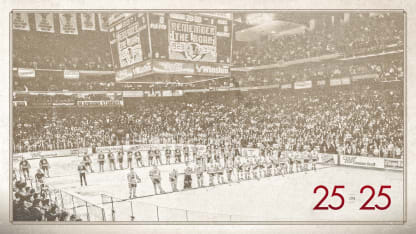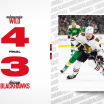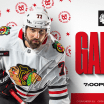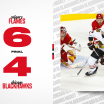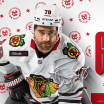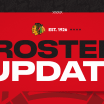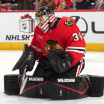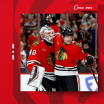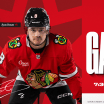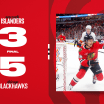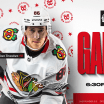The Blackhawks, and their opponents, arose on stairwells from locker rooms in the basement, which was monitored by a security detail that included a skeptical German shepherd aptly named "Bruno." Tony Esposito, now a Hall of Fame ambassador, recalls that reporting for work to encounter flying pucks first required circumventing Bruno, not much of a hockey fan.
For decades until the mid-1970s, the Stadium's center piece was a mysterious analog clock that, albeit rarely upon first glance, informed about time remaining in each period. For penalties, smaller dials were activated, prompting one visiting coach to remark that the Kentucky Derby did not constitute the most exacting two minutes in sports. That label belonged to trying to figure out when his guy could leave the box.
Broadcasters also could be baffled, whether they were announcing for the home side, enjoying a spectacular view on a platform extended from the first balcony, or describing for road audiences from a suspended second balcony gondola that legendary voice Dan Kelly said would vibrate with every ovation following a Blackhawks' goal.
Situated on the west end with multiple dents in the wall was the press box, where journalists watched attentively, lest they be attacked by a wayward puck. On the east side stood regally the massive Barton organ, presided over for so many years by maestro Al Melgard, who had only nine fingers but never missed a note or a cue. "Did he play 'Three Blind Mice'?" inquired the lone referee after a particularly rowdy contest, staring at his two linesmen.
You didn't go to the Stadium for comfort or carving stations. You went to watch and listen. A Who's Who performed there: Elvis, the Rolling Stones and, of course, The Who. Big time boxing was a staple. Ice shows, indoor soccer, multiple Republican and Democratic Conventions, college basketball. Because of a blizzard, the 1932 NFL Championship was staged there. Bears 9, Portsmouth Spartans 0. Upon the assassination of Anton Cermak, mayor of Chicago, his funeral was at the Stadium. Before a rodeo, Roy Rogers proposed to Dale Evans backstage.
But since 1929, when they left the Chicago Coliseum, the Blackhawks were the star tenants and main attraction at the Stadium. They won Stanley Cups on West Madison Street in 1934 and 1938. Usually, but not always, the building was full. Gate 3½ on the west side was where players entered and exited from their parking lot. Thus, it became a gathering ground for icons like Bobby Hull and Stan Mikita to sign autographs, by the thousands.
In 1991, the National Hockey League All-Star Game was staged, only days after the Persian Gulf War began. Wayne Gretzky strongly suggested cancellation, out of respect for armed forces commissioned to liberate Kuwait. The game went on, though, and he witnessed an outpouring of patriotism, televised around the world.
"Unbelievable," said the Great One, dazzled by the sea of American and Canadian flags. "Always been my favorite road rink."
In 1992, the Blackhawks and Bulls were in the Stanley Cup and NBA Finals, respectively. In April, 1994, Hull, Mikita, Esposito and Glenn Hall attended the last regular season game ever. Banners bearing their retired numbers were lowered from the ceiling, to be raised across the street at the United Center. Then, the Blackhawks partook of one more playoff series. Jeremy Roenick scored their last goal at the Stadium. But in a 1-0 Game 6 elimination against the Toronto Maple Leafs, the last red light was effected by Mike Gartner.
That autumn, a great era concluded. A charity basketball game inside, with a wrecking ball lingering outside. Michael Jordan scored 52 points. Before he was done, Jordan went to his knees to kiss the Stadium court goodbye. He, too, loved the Madhouse on Madison.
